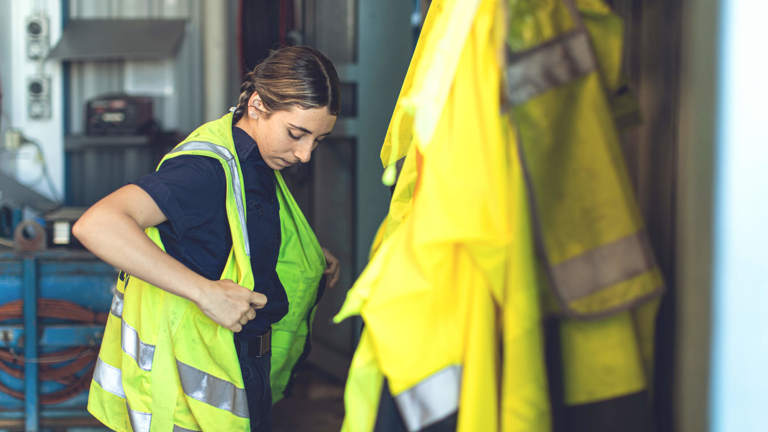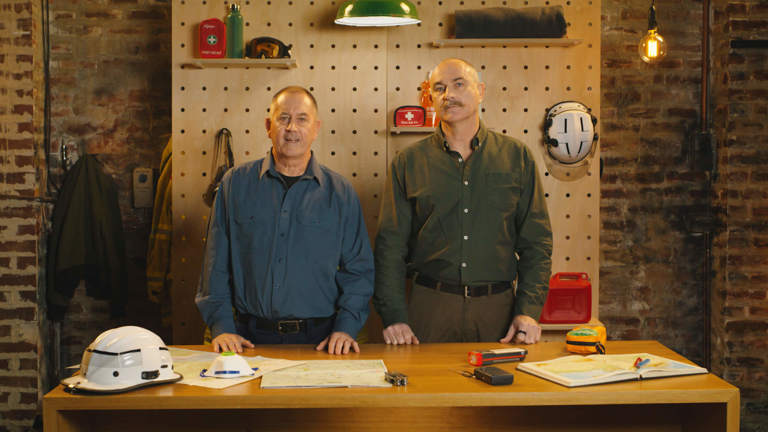Bushfire season is fast approaching, which means now is the time to prepare your property, no matter where you live.
“Preparation is the key to ensuring the best outcome in any emergency,” says Jim Smith, veteran firefighter and former Deputy Commissioner for Fire and Rescue NSW.
“Waiting until the fire is on your doorstep is often too late.”
Fire authorities have already identified the potential for heightened fire risk this season, particularly in areas that have seen record-breaking temperatures and increased fuel loads due to unseasonal rainfall.1
Rob Webb, CEO of the National Council for Fire and Emergency Services (AFAC), encourages all Australians to start preparing now for fire season.1
“Now is the time to make a plan,” says Rob. “Understand your local risk, know where you will get your information and talk to your family about what you will do.”1
To help you get started, Jim has identified three key jobs you can tackle to prepare your home this weekend.
1. Review or create your bushfire survival plan
Fire services across the country recommend that every Australian, regardless of where they live, knows how to prepare for a bushfire and has a clear bushfire survival plan. A bushfire survival plan outlines the steps you’ll take if your home is threatened by bushfire.
Having a plan in place means there’s less to think about on the day when emotions may be running high, reducing the chance of panic setting in. Jim says bushfire survival plans generally include:
- A list of household members covered by the plan, including family or other household members, visitors and pets and livestock
- When you will evacuate in case of fire, and what will trigger you to leave
- Where you’ll go in case of evacuation and the routes you’ll take to get there
- Whom you’ll notify in case of a bushfire
- What you’ll pack in your bushfire emergency kit
- What actions you’ll take if you’re not able to evacuate safely before a fire arrives.
With Jim’s help, we’ve created a bushfire survival plan template that you can download and complete today. If you have pets or livestock, you might want to regularly rehearse your plan so that your animals are familiar with it.
Everyone in your household should understand what’s in the plan and where it’s kept.
“It’s important that everybody is across the plan,” says Jim. “That way, there’s no confusion on the day.”
2. Clear vegetation around the home
Once your survival plan is ready, you might want to prepare your property by reducing the amount of vegetation around your home.
Jim advises this could include mowing the lawn, clearing leaves, twigs, bark and other debris from your gutters, roof and grounds, and trimming low-lying branches around your home to a height of two metres from the ground.2
Clearing flammable materials around your home can significantly reduce your vulnerability to ember attacks, which is one of the most common ways that suburban homes ignite during bushfires.3
Mark Dobson, firefighter and volunteer team manager for Disaster Relief Australia, says if you live near bushland, it’s important to clear a space between it and your home. For more details about clearing vegetation, you might want to check with your council regarding local regulations.4
“Properties nestled too close to bushland can often be difficult to defend,” Mark says.
If you have time, other outdoor jobs you could start this weekend to prepare your home include:
- Moving combustibles such as wood piles, mulch, outdoor furniture, and any flammable materials away from your home
- Installing metal fly screens over vent holes and windows to prevent embers from entering your home
- Pointing LPG cylinder safety valves away from the house.5
If you live on a rural or semi-rural property, our experts say it’s important to check and maintain your fire-fighting equipment, such as water pumps, generators and hoses.
3. Prepare a bushfire emergency kit
In the event of a bushfire, having an emergency kit can make all the difference.
“When the fire is near, it’s too late to start packing,” Jim says. “Your kit should be ready, so when your trigger to leave is reached, you can just grab your bags and go.”
Get your emergency kit started this weekend by collecting items such as spare clothing (particularly long-sleeved shirts, trousers and hats), masks for everyone, a first-aid kit and important personal documents, such as your ID, home insurance details and property deeds.6
Other important items to include in your emergency kit are:
- Medications and prescriptions
- Toiletries
- Enough non-perishable food and water for three days
- Flashlights, batteries, a portable phone charger and a battery-operated radio.6
Having your kit prepared in advance won’t just save you time in an emergency but also means you won’t be scrambling to gather essential items in the heat of the moment.
It’s also a good idea to review your kit annually to make sure everything is up to date, particularly medications and important documents.
Why it’s so important to plan and prepare
Bushfires aren’t just a concern for those living in rural areas. Suburban homes near bushland or within the urban-bush interface are also at risk, particularly from ember attacks.
“Many suburban homes are destroyed by embers that ignite flammable materials in gardens or on roofs,” says Jim. “Keeping vegetation trimmed and clearing gutters can reduce this risk significantly.”
With climate change influencing the frequency and risk of dangerous bushfire conditions,7 the importance of bushfire preparation has only increased.
“The scale and speed of fires are accelerating,” Mark explains. “Fire seasons are longer, and the intensity is greater due to hotter, drier conditions.”
“Whether you live in a rural area, on the outskirts of the city, or even a suburban home, everyone should take the time to prepare.”
For more bushfire preparation tips, visit our you.prepared emergency content hub.
Jim Smith & Mark Dobson
With a combined firefighting history of more than 60 years, Jim Smith and Mark Dobson are leading members of Australia’s firefighting community. Their experience encompasses major bushfire events, including the Canberra Bushfires in 2003, Black Saturday in 2009 and the Black Summer fires of 2019-20. The pair now work together in their respective roles as General Manager and Founder of Ordinary Courage, a consultancy dedicated to providing organisations with the tools to sustain good workplace mental health. Youi is proud to partner with Jim and Mark in the creation of this bushfire preparedness content.
The content in this article has been prepared based on current government and emergency services guidelines and expert advice provided at the time of publishing. This information is subject to change. Please be sure to check for the latest information and always consider your personal circumstances regarding bushfire preparedness and response.
Where you have increased your cover or reduced your excess within 72 hours (or other period noted on your policy schedule) of a flood, storm, hail or bushfire occurring, cover will be limited to the amount that was effective prior to the change. Loss, damage or legal liability caused by, resulting or arising from flood, storm, hail or bushfire during the first 72 hours (or other period noted on your policy schedule) of your policy first being purchased is excluded unless certain conditions apply. Refer to the relevant Product Disclosure Statement for full T&Cs.
1 Source: National Council for Fire and Emergency Services – Seasonal Bushfire Outlook Spring 2024, September 2024
2 Source: SA Country Fire Service – Preparing your home & property
3 Source: CSIRO – Preparing your home for bushfire, September 2023
4 Source: Vic Government – Vegetation removal for bushfire protection, July 2023
5 Source: Qld Fire Department – Prepare for bushfire season
6 Source: Qld Government – Pack an emergency kit
7 Source: Bureau of Meteorology – How weather affects fires



